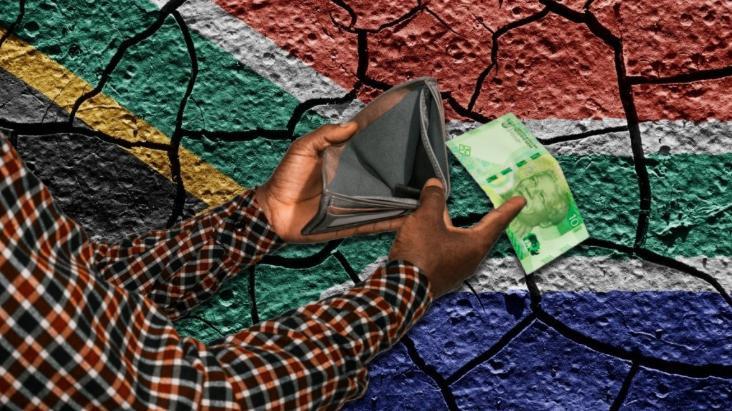Africa-Press – South-Africa. Since 2019, South Africa’s GDP per capita has been below 2007 levels, meaning South Africans have become poorer in a stagnant economy.
Compared to its emerging market peers, South Africa is the only country that experienced a decline in GDP per capita relative to 2007 levels.
While some of this can be attributed to external shocks, most of the blame lies at South Africa’s feet, with structural constraints on the economy’s fundamental drivers eroding the country’s potential growth.
This is according to Coface economists Aroni Chauduri and Noémie David in the organisation’s recent report, “Cracks in the BRIC(K)S: Why South Africa Fails to Thrive.”
GDP per capita measures a country’s economic output per person, calculated by dividing the total GDP by the population. It is a standard metric for assessing a nation’s economic prosperity and living standards.
In their report, Chauduri and David explained that South Africa’s GDP per capita in 2024 was below 2007 levels, as growth failed to pick up in the decades following the Great Financial Crisis (GFC).
This has been accompanied by the deterioration in several social indicators, including extremely high levels of unemployment, poverty, inequality and crime.
At the same time, Chauduri and David noted that governance also deteriorated, and critical infrastructure was in disrepair, making living conditions increasingly challenging for the population.
“When comparing South Africa to peer emerging economies in Asia and Latin America, it is evident that it has underperformed in terms of GDP per capita, employment, and investment, while being similarly exposed to global economic cycles,” they said.
“This suggests large structural constraints limiting South Africa’s growth potential and its ability to recover from external shocks.”
The economists explained that these constraints were focused on the foundations of the country’s economic structure, including energy and South Africa’s labour market.
For energy, Chauduri and David explained that the failure of electricity supply was caused by flaws in price regulation and Eskom’s insufficient capital expenditure by Eskom, which ultimately made it financially unsustainable.
The failures of South Africa’s labour market are evident in the country’s structurally high unemployment rate, which is a result of the economy’s low growth, deindustrialisation, and skill mismatches.
“Furthermore, labour force participation is low due to the high level of exclusion caused by spatial disparities inherited from the apartheid era,” they said.
South Africa’s decline in GDP per capita can be seen in the graph below, courtesy of Coface.
South Africans getting poorer
In a recent interview with BizNews, economist Dawie Roodt explained that South Africans have been getting poorer on a per capita basis over the past two decades.
“If you look at a successful society, you have high levels of income, a good, safe environment, a clean environment, trustworthy police, good levels of education, health services, all good things. We can’t say that about South Africa,” he said.
Roodt explained that one of South Africa’s biggest problems is its slow economic growth. The country’s economy has declined from an average annual growth rate of 4% in 2008 to 0.8% less than two decades later.
He explained that this has made several other metrics, including state debt and GDP per capita, significantly worse over the past two decades.
“If you look at the state’s finances today, they have become unstable in the sense that debt levels just kept on going up as a percentage of GDP,” he said.
“We spend more and more on interest and state debt, so we need to do something – we need to reduce this ratio of debt-to-GDP.”
“I say we need to reduce the ratio because we can actually increase debt as long as the economy grows fast enough, but the economy doesn’t grow fast enough. So, we are heading for a financial crisis if we continue like this.”
South Africa’s debt burden has risen to around 75% of GDP, with the state spending an estimated R1.2 billion a day servicing this debt.
This has left the government scrambling for more revenue year after year, with the Treasury often turning to tax increases.
It has also crowded out spending on more productive and helpful expenditure items like health, infrastructure and education.
Therefore, South Africans are not only left with a higher tax burden that is eating away at their take-home pay, but are also not benefiting from these higher contributions in the form of improved state services.
Source: dailyinvestor
For More News And Analysis About South-Africa Follow Africa-Press






